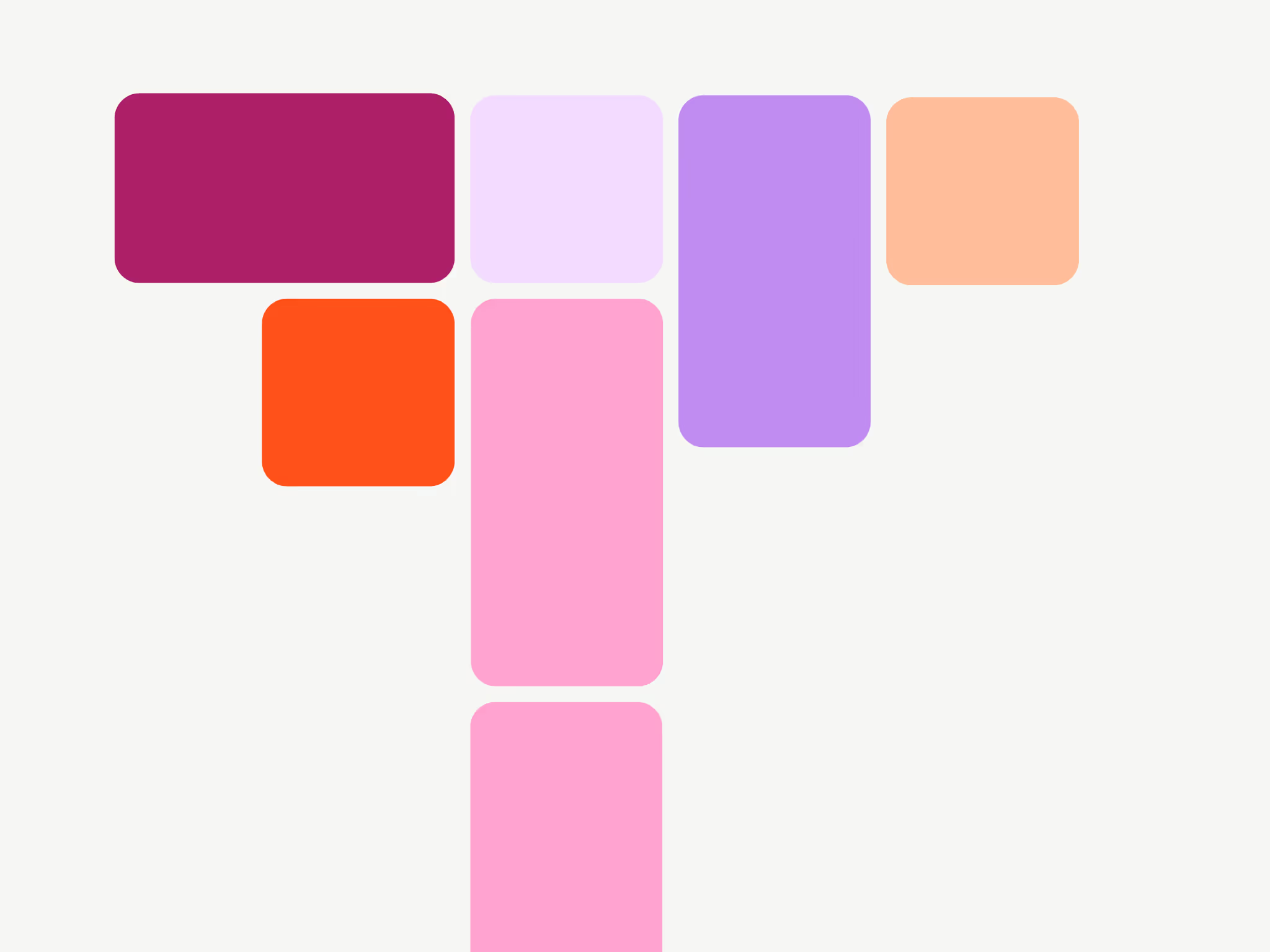Influencer search is a shadow of its former self. In the past, it was relatively straightforward to find a creator who fit your niche, spoke to your community, and made decent content. You could gift them one of your products or do a paid partnership without breaking the bank.
But today, that feels like a lot to ask for. For starters, you’ve got to filter and identify the right-match creators from a gazillion influencer profiles. Once you manage to find them, you learn they might be too expensive, tied to exclusivity by a competitor, or just too busy to partner with you. Ouch.
And that’s not all: with the saturation of influencers and influencer content, you’re now marketing in a “sea of sameness” – making it much harder to stand out and attract your ideal customers.
Amongst all this chaos, how are marketers finding the right influencers to partner with today? What old tactics should be thrown out, and which fresh strategies are on the rise? We asked these questions (and a lot more) to 56 influencer marketers. Here’s the state of influencer discovery in 2025.
Marketers are relying on socials & software to find creators
The two main ways marketers find creators are scrolling social media manually and using influencer discovery tools.
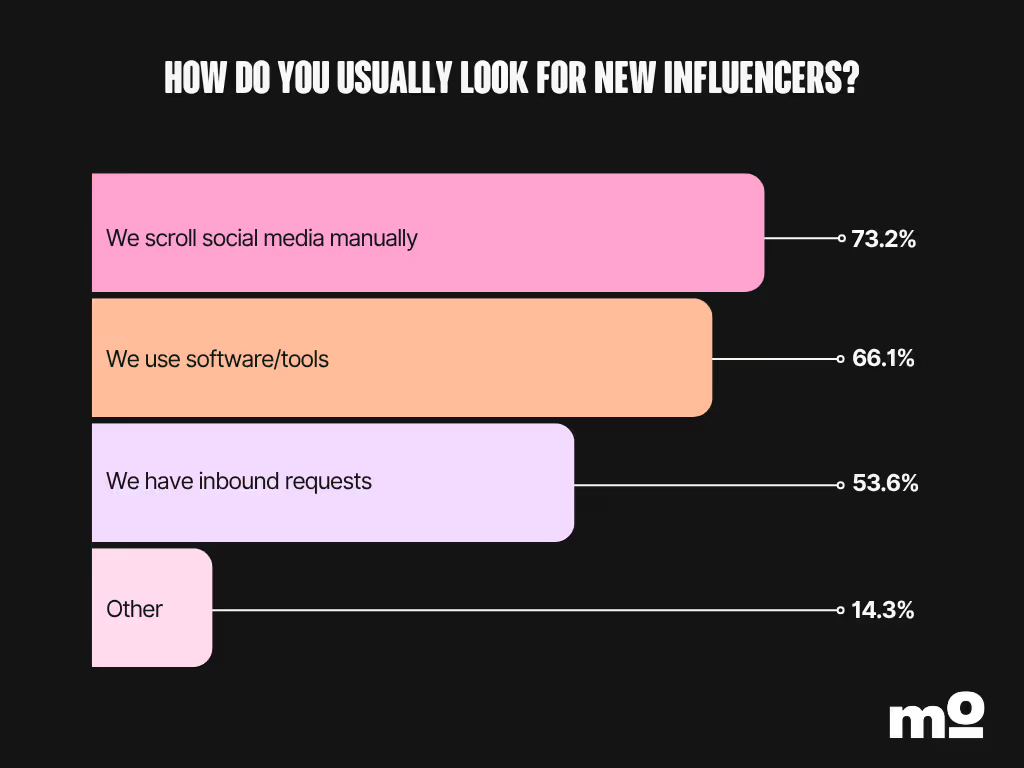
Note: It’s not one or the other – most marketers use more than one method to hunt for influencers.
How marketers use hashtags and keywords in manual search
In native social search, just over 66% of marketers reported relying on hashtags or keywords to find the right creators. The hashtags and keywords you should use depend on your niche, brand, campaign, and products. For example, if you sell skincare products, you might search for:
- skincare
- skincare routine
- nighttime skincare products
- etc.
You can also search for products you’re trying to promote. To continue our above example, you might search for “sunscreens for summer” or “pigmentation serums.”
If you’re looking for a certain type of influencer – like mom creators – or creators with specific credentials, you can search for those keywords or hashtags, too. For instance, if you’re looking for influencers who are dermatologists, you might search for hashtags such as #dermatologist or #dermtok.
Keywords and hashtags also make it easy to find niche creators. Influencers often highlight their content niche in their name field, making it easy for you to find them in search (just remember to use the Accounts tab instead of the Content one).
For example, I found Hannah Hargrove by searching for “baby nutrition” because those terms are included in her Instagram name.

Apart from brand, product, or niche-related keywords and hashtags, you can also find influencers using:
- platform-specific hashtags (like #tiktokmademebuyit)
- content-specific hashtags (like #grwm or #vlog)
- location-specific hashtags (like #london or #newyork), especially for geo-targeted campaigns
The above hashtags and keywords are helpful when you’re open to finding various kinds of creators and aren’t afraid to venture outside your niche. To find influencers, Lee Drysdale even hunts for creators who make excellent trending content on TikTok:
To sum up, most marketers are using five main types of hashtags or keywords to manually search for influencers on social media
- Niche-specific keywords/hashtags – such as skincare, fashion, or travel
- Category or product keywords/hashtags – such as skirts, earplugs, or makeup
- Credential-specific keywords/hashtags – such as nutritionist, food creator, or doctor
- Platform-specific keywords/hashtags – such as tiktokmademebuyit or booktok
- Content-specific keywords/hashtags – such as “get ready with me,” vlogs, or “day in my life”
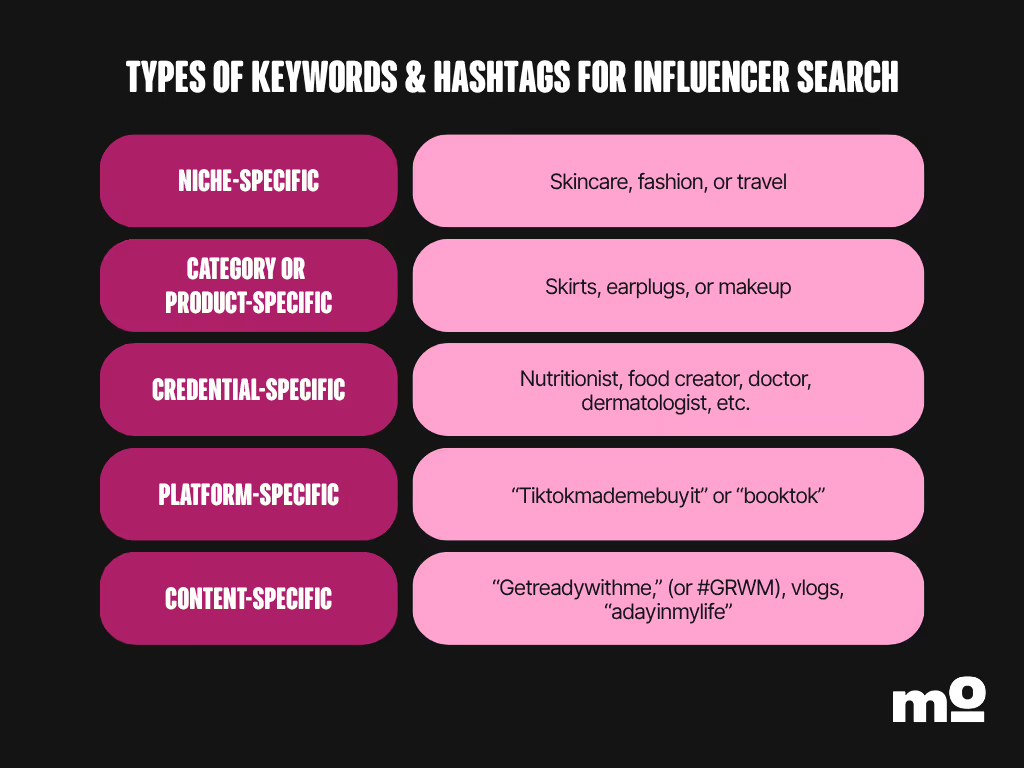
How marketers are using software for influencer search
To start, let me clarify the types of search software, and how they work.
(Then, we’ll get into how influencer marketers use these tools.)
In my definition, there are two types of search software:
- Opt-in databases: An opt-in database is what it sounds like. Creators opt to be in it, and often the company will have an approval process.
- Open-network databases: An open-network database lists everybody. Every public profile. No matter which country, which city, which niche, literally every creator is in there – you just have to figure out the right filters to use.
The advantage of an opt-in database is that all the creators are actively hunting for brand collabs. Response rates are higher. The disadvantage is the limited pool of talent.
Once you pick a platform (e.g. TikTok), a city or country, a niche (etc.) – you’ll filter down to a very small list, and just keep seeing the same faces in every search. The same faces all your competitors are finding too.
This effect is worse when you go outside of the US and into more unusual niches.
However, with an open-network database, like Modash, you aren't relying on influencers who have only heard of the platform you're using, instead, you get to pull from everyone and find more of those smaller, niche creators.
At Modash, we’ve found you can also expand your influencer pool by using keywords and hashtags related to storyfit influencers – creators who aren’t the obvious choice but who can tell your brand story authentically by weaving a context-driven narrative.
For example, when you think of Metabolic Meals – a food delivery service – you would assume their first choice is to partner with health influencers. And they do, but they also collaborate with mom influencers to show a different use case of their product to their target customers.
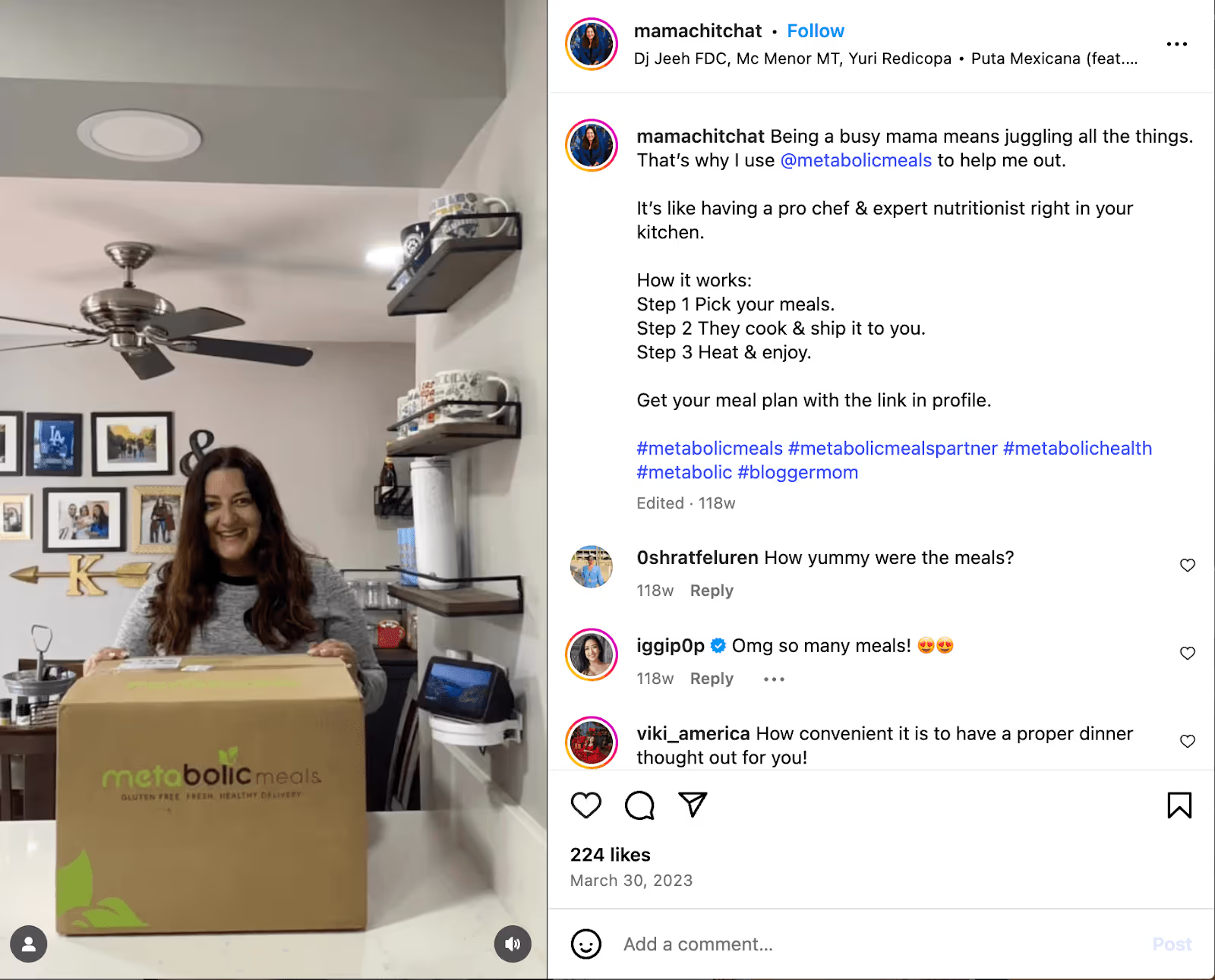
Later, I go deeper into storyfit influencers and how to find them. But first, I want to wrap up on manually searching for creators.
There are downsides to using social media scroll/search to find influencers:
- It’s time-consuming since you can’t filter for creators who match your vetting criteria – so you still need to ask creators for their audience metrics.
- It’s a gamble because the influencers you like might not have the right audience demographics or be within your budget.
Which is why the savvy marketers we interviewed didn’t rely on keywords and hashtags alone – they also used an influencer discovery tool. Hear it from Victor Wiśniowski:
Finding creators is only half the battle, though. The next step is evaluating them, especially for brand fit.
Where marketers are really feeling the search pain
Nearly all of the marketers we polled said they were at least hitting a wall with influencer search at least some of the time.

And when we dug a little deeper into what that meant, most people said that they're only finding low-quality creators, with low engagement rate, poor audience fit, or an overall spammy look and feel.

If marketers were constantly hitting a wall when it comes to finding relevant creators to work with, I wondered if there really was no one left, or if maybe the quality that marketers were looking for was too strict.
Because on one hand, if you're in a specific niche, looking for a specific kind of influencer, you're going to hit the bottom pretty quickly.
On the other, maybe marketers were just having a hard time wading through the masses.
How long it takes to find influencers
Over 44% of marketers feel they’re spending too much time finding the right influencers.

How much time is too much time? Most influencers in our survey spend 5–15 minutes evaluating a single creator’s profile. Abudullah Khan shares why it’s time-consuming to search for the best creators:
How long it will take you to evaluate an influencer depends on various factors, including:
- Niche: It might take longer to find relevant creators for hyper-specific niches.
- Industry familiarity: If you’ve already done a few collaborations in your niche/industry, you already know what to look for and which creators to weed out. If you’re looking for influencers in a new industry, however, it might take some time to learn the ropes.
- Campaign requirements: If you require a specific type of content, or creators with certain credentials, it will take longer to find them.
- Social media platform: Short-form content, like that of Instagram and TikTok, will take less time to examine than long-form content, like YouTube videos.
- Brand restrictions: If you’re working in highly regulated fields (such as medicine or law), then you also need to spend time conducting background checks and ensuring the authenticity of the creator.
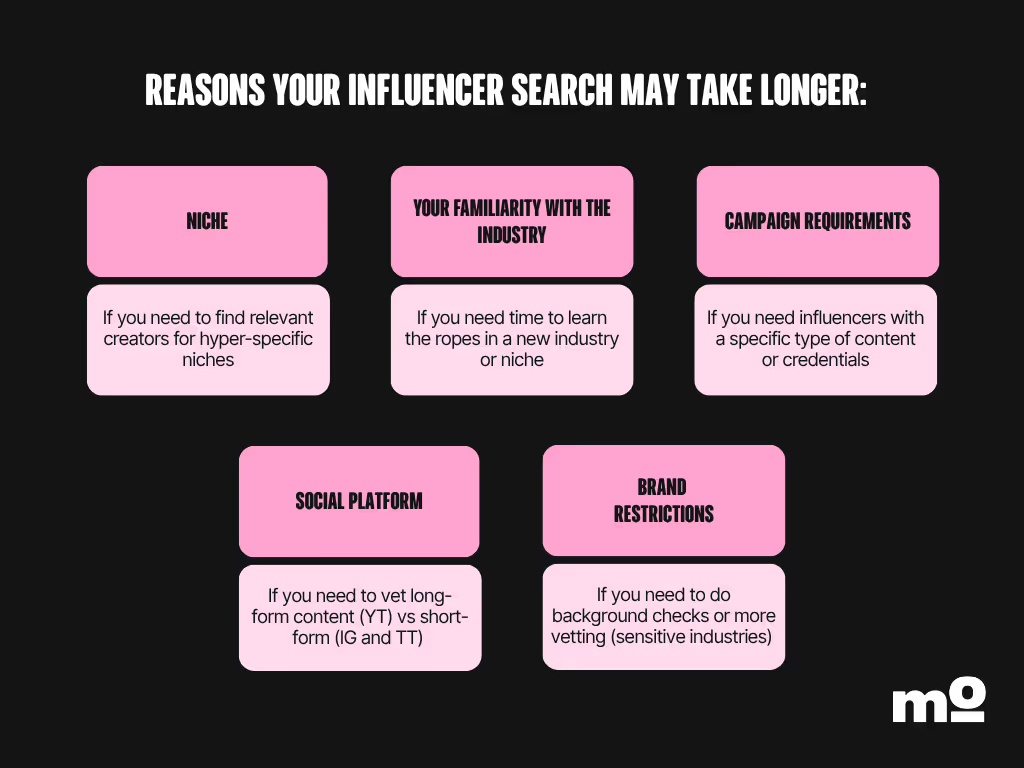
Marketers seem to be spending a decent amount of time actually shortlisting creators to work with, so where are they actually running into issues?
Is the "brand fit" criteria getting stricter?
While all of the above contribute to a long discovery process, another factor is that marketers – despite being well-intentioned – often apply overly strict criteria in search of the “perfect influencer.” According to our survey, here’s what marketers prioritize when assessing brand fit:
The influencer…
- has the right audience demographics
- creates content that aligns with the brand’s values
- has an aesthetic that matches the brand’s
- is in the same niche or industry
- talks about the problem that the brand’s product solves
- already uses or loves the brand’s product
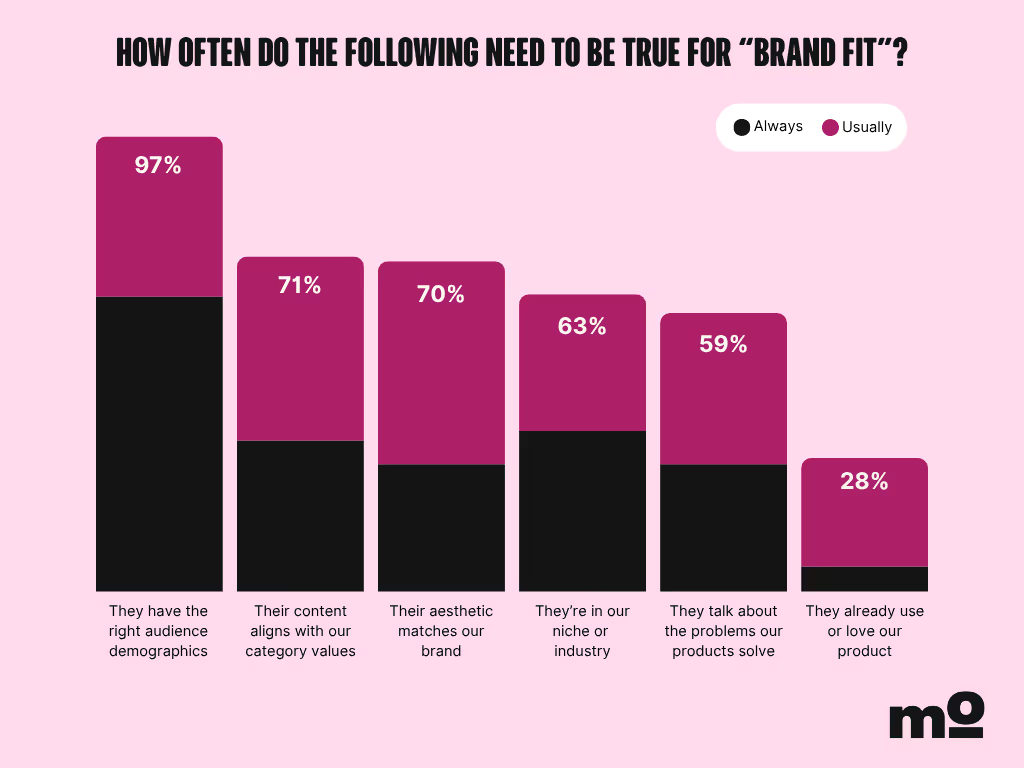
Apart from these, marketers also consider:
- a creator’s storytelling skills
- the frequency of their collaborations with competitors
- the authenticity of their engagement
- whether they respond to comments
- their energy
- their selling capabilities
- and many other factors.
None of these criteria are meaningless, but when each one becomes non-negotiable, you significantly shrink your pool of potential influencer partners.
Given how particular the selection process has become, it’s no surprise that over 87% of marketers in our survey said finding the right-fit influencer is getting harder.
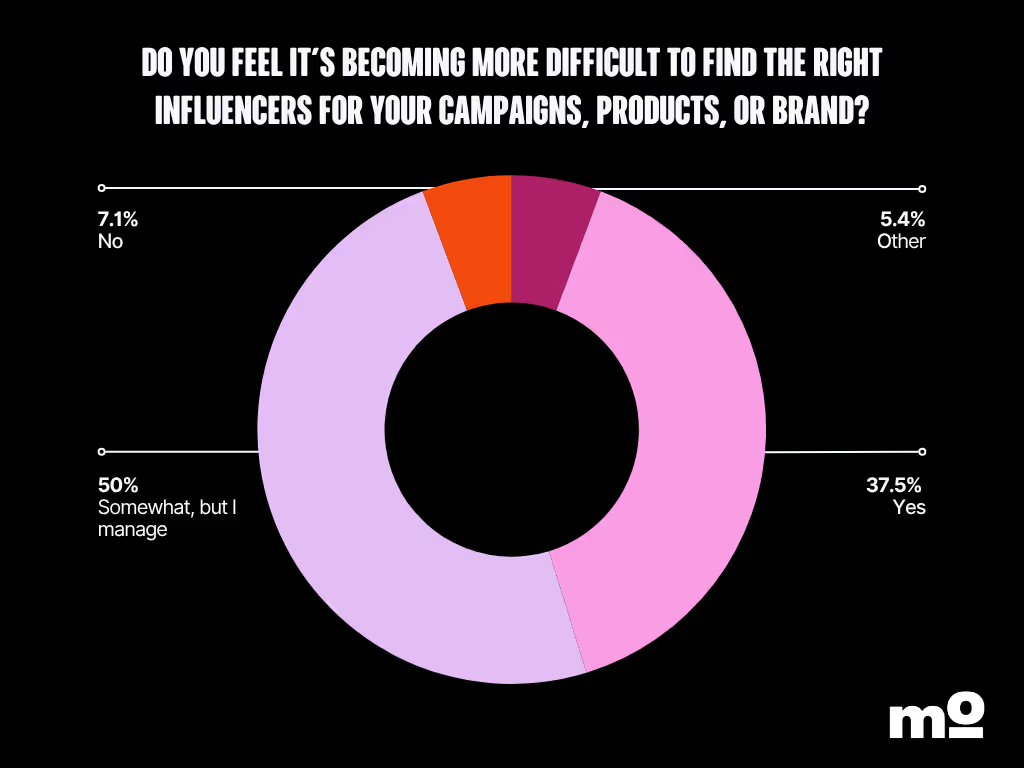
But selectiveness isn’t the only reason influencer discovery is getting tougher. There are most-definitely real search challenges that they're facing.
However, we also found that, oftentimes, brand fit criteria isn't just strict, it's written in stone.
How often brands reasses the criteria around brand fit
With how quickly influencer marketing changes, I wanted to know how often brands and marketers were willing to reasses the criteria around brand fit. I was surprised to learn that it took a true unicorn for most marketers to consider rethinking what brand fit looks like.
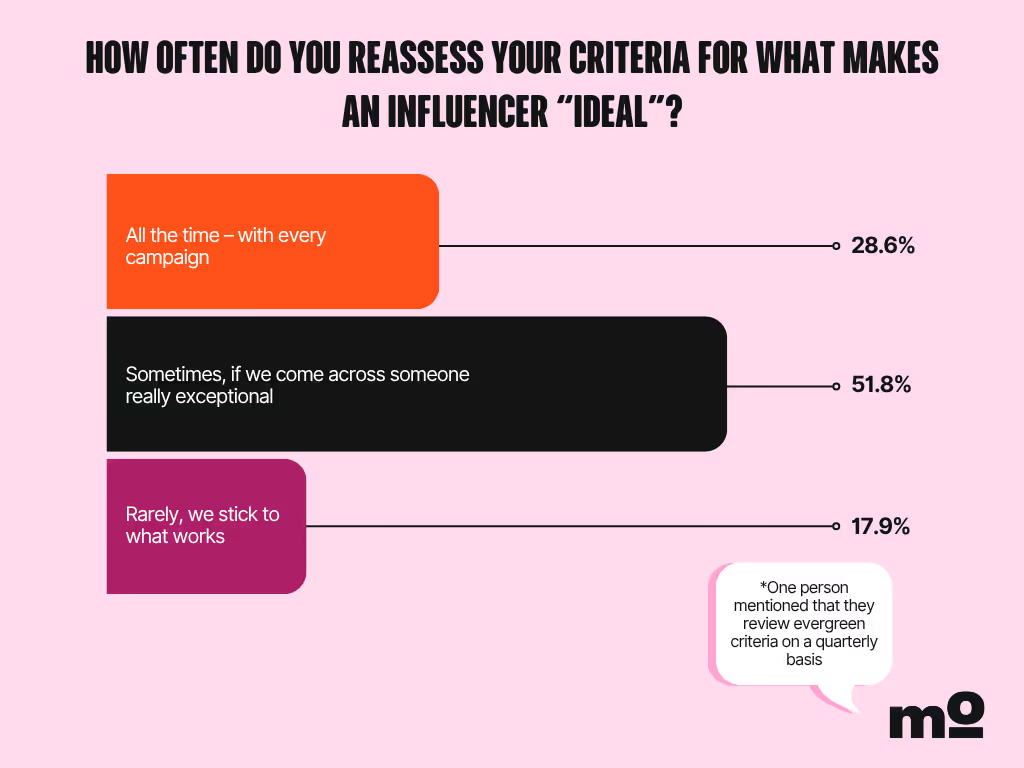
In fact, when I asked marketers if they often experimented with the creators they hired, only 35.7% regularly tested new kinds of creators for their brands.
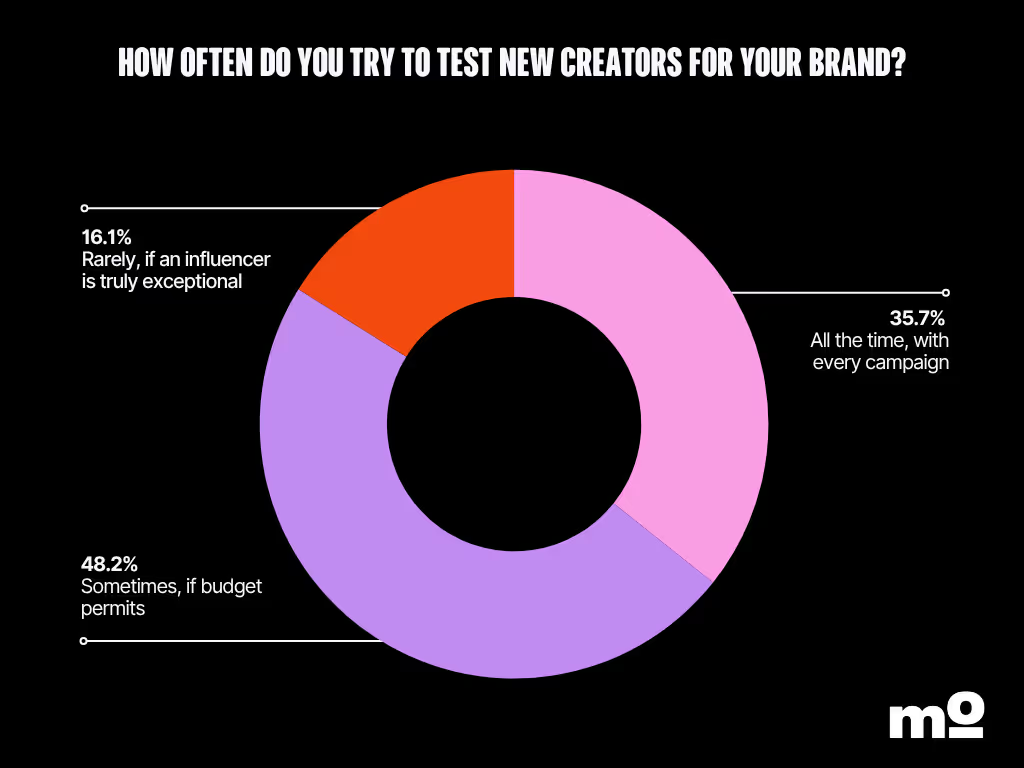
While many were beholden to the budget (understandable, same.), I wondered if any marketers were setting aside budget specifically for testing new creators. Only a third of respondents were doing this regularly.
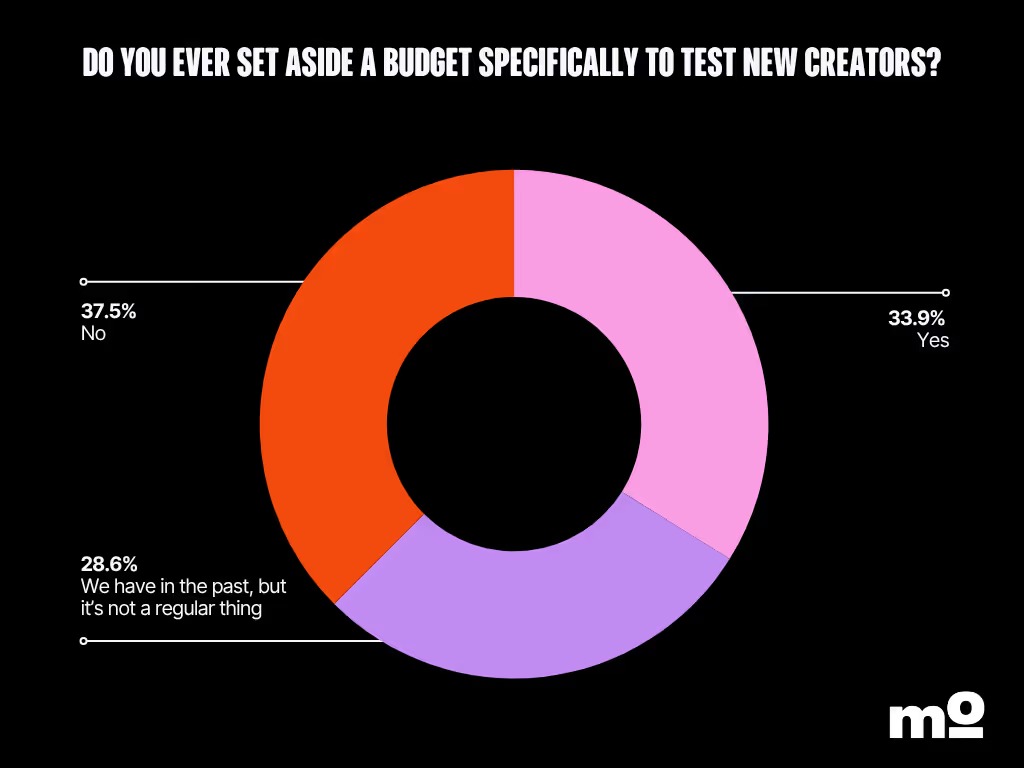
(In absolutely all fairness, only 40% of the marketers we polled actually had carte blanche to do whatever they wanted when it came to hiring influencers. More than half of the marketers we spoke to often had more management coming from higher up.)
But maybe it's not getting harder per se, it's just changing. Maybe with so much more competition in the influencer space, we need to think about different kinds of influencer collaborations, such as a storyfit influencer.
These are influencers who maybe don't make a lot of sense on paper, but they (and their content) exist in a moment in time where your product is super relevant to their needs. When you hit a wall looking for your typical product fit influencer, it might be time to get a little more creative about what brand fit means for you.
If you use an influencer discovery tool like Modash, you can filter for right-fit creators using:
- audience size and demographics
- sponsored content performance
- engagement rate
- fake followers
- interests
- … and a lot more.
And then, with data in-hand, you can start looking for the influencers that you haven't tried working with yet – and they may just surprise you.
And if that feels like a tall order via scrolling socials manually, then give Modash a spin for free. You can try it for 14 days without even getting out your credit card.






